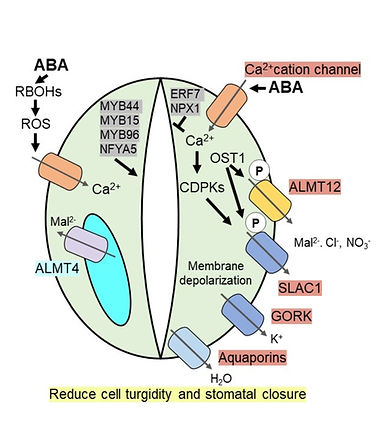
Plant Signaling Lab

RESEARCH & DISCOVERIES
The multidisciplinary nature of our focused Research Lab has been the major strength of our research since we began our work in 2019. Keep reading to find out what we are currently investigating.
Plant Receptor-Mediated Signaling in Legume Nodulation
Molecular communication is a new paradigm of information relay, which uses chemical signals or molecules as dialogues for communication and has been witnessed in prokaryotes, plants as well as in animal kingdom. Understanding this fascinating relay of signals between plants and rhizobia during the establishment of a synergistic relationship for biological nitrogen fixation represents one of the hotspots in plant biology research. Predominantly, their interaction is initiated by flavonoids exuding from plant roots, which provokes changes in the expression profile of rhizobial genes. Compatible interactions promote the secretion of Nod factors (NFs) from rhizobia, which are recognised by cognate host receptors. Perception of NFs by host receptors initiates the symbiosis and ultimately leads to the accommodation of rhizobia within root nodules via a series of mutual exchange of signals.


Signaling mechanism involved in Drought vs Desiccation tolerance
Drought is considered as a major environmental threat to global food security. It has a pronounced effect on agriculture and leads to high yield losses across the world. We are interested in the identification and understanding of the molecular mechanisms involved during desiccation and drought tolerance in evolutionary important early land plant, model and crop plants. Transcriptome and metabolite analysis identified that both desiccation tolerance and drought tolerance are mediated by different signaling components such as phytohormones, receptors like kinases, MAP-kinases, heterotrimeric G-proteins, transcription factors, protective proteins, etc. We work on specific transcription factors and heterotrimeric G-proteins, in view to achieve a long-term goal of obtaining climate resilient and high yielding crops.
RECENT PUBLICATIONS
The Negative Impact of Prolonged Desiccation on theRecovery of Selaginella bryopteris: Insights IntoAutophagy and Cellular Protection Strategies
Drought poses a significant threat to global food security by causing desiccation of plant cells, which reduces crop growth and productivity. While seeds and spores can endure desiccation, most vegetative tissues lack this capability. Desiccation tolerance enables certain plants to survive extreme dehydration and recover upon rehydration, but recovery mechanisms after prolonged desiccation remain unclear. Our study on the desiccation-tolerant pteridophyte Selaginella bryopteris employed a multi-omics approach, integrating physiological, biochemical, transcriptomic, and metabolomic analyses. Prolonged desiccation led to reactive oxygen species (ROS) accumulation, causing cellular damage and cell death. Transcriptome and Weighted Gene Co-expression Network Analysis (WGCNA) revealed the roles of protective proteins, alternative respiration, and protein homeostasis during recovery. Metabolomic analysis highlighted ceramide precursors in prolonged desiccated samples, supporting observed patterns of cell death. Microscopic analysis and H2O2 treatments underscored the importance of autophagy and cell death in desiccation tolerance. In conclusion, ROS-induced damage from prolonged desiccation, exacerbated by the loss of protective mechanisms, triggered extensive autophagy and programmed cell death. However, reprogramming of gene networks, antioxidant metabolite accumulation, and controlled autophagy mitigated damage during short-term desiccation. Notably, cell death in older tissues may facilitate resource remobilization, promoting resilience and recovery in younger tissues.
